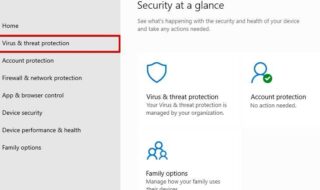When managing a business’s technology, the decision between in-house and outsourced IT support has become pivotal for organizations aiming to maintain a competitive edge. This crucial choice demands a thorough examination of the advantages and challenges inherent in each approach.
As a business owner, it’s your job to consider the IT support your business needs thoroughly. But which option should you go for?

Contents
What is In-House IT Support?
Maintaining an in-house IT support team involves hiring skilled professionals dedicated to the organization’s technological needs. One primary advantage is the immediate accessibility of IT staff, fostering a swift response to any issues that may arise. This close proximity also allows for a deeper understanding of the company’s unique operations, enabling the IT team to tailor solutions that align seamlessly with business objectives.
However, the in-house model has its share of challenges. Building and retaining a proficient IT team demands a considerable investment in recruitment, training, and employee benefits. Moreover, the internal team may face limitations in terms of scalability and expertise in emerging technologies. As the tech landscape evolves rapidly, businesses relying solely on in-house teams may find it challenging to keep pace with the latest advancements.
What is Outsourced IT Support?
Outsourcing IT support presents a compelling alternative, allowing businesses to leverage the expertise of specialized service providers. External IT firms often bring a wealth of experience, having worked with a diverse range of clients and technologies. This breadth of knowledge positions them well to address complex challenges and implement best practices, offering a strategic advantage for businesses seeking managed it services.
One of the significant benefits of outsourcing lies in cost efficiency. Businesses can access a pool of skilled professionals without the burden of full-time employee expenses. Additionally, outsourcing provides scalability, enabling organizations to adapt their IT resources according to fluctuating needs.
However, the distance between an external team and the day-to-day operations of a business can sometimes result in a perceived lack of understanding, potentially leading to delays in issue resolution.
Factors to Consider When Choosing Your IT Support
When deciding between in-house and outsourced IT support, businesses must carefully assess their unique requirements, considering factors such as budget, scalability, and the nature of their industry.
When to Go with In-House Support?
In scenarios where businesses have highly sensitive data, stringent compliance requirements, or a need for immediate on-site support, in-house IT support often proves advantageous. Industries such as finance and healthcare, where regulatory compliance is paramount, may find that having direct control over IT operations enhances security and facilitates adherence to industry-specific standards.
Moreover, companies with predictable and steady IT requirements, where the workload remains relatively constant, may find in-house support more cost-effective in the long run. Another compelling factor favoring in-house support is the ability to build a cohesive, dedicated team that aligns closely with the company’s culture and goals.
When to Go With Outsourced Support?
Conversely, outsourcing becomes particularly attractive for businesses facing fluctuating workloads, seasonal demands, or those experiencing rapid growth. In dynamic industries where technology trends evolve swiftly, outsourcing enables organizations to tap into a pool of specialized expertise without the long-term commitment and expense of maintaining an in-house team.
Small to medium-sized enterprises (SMEs) often find outsourced support to be a pragmatic solution, providing access to enterprise-level skills and resources without the need for extensive in-house infrastructure. Additionally, outsourcing offers flexibility, allowing businesses to scale IT resources up or down as needed, avoiding the challenges of maintaining a fixed in-house team during reduced-demand periods.
Hybrid Models
Recognizing that neither in-house nor outsourced support is a one-size-fits-all solution, many businesses opt for hybrid models. This approach combines the benefits of in-house expertise with the flexibility and specialized knowledge offered by external partners. In hybrid scenarios, organizations can strategically allocate critical functions to in-house teams while outsourcing specific tasks or projects to meet evolving demands.
Common Mistakes to Avoid in Choosing IT Support
When making a choice between in-house and outsourced IT support, businesses must also be mindful of common pitfalls that can compromise the effectiveness of their decision-making process. Avoiding these mistakes is essential for ensuring a seamless integration of IT support that aligns with the overall goals and functionality of the organization.
Neglecting Comprehensive Needs Assessment
One prevalent mistake is rushing into a decision without conducting a thorough needs assessment. Failing to understand the specific IT requirements of the business can lead to a mismatch between the chosen support model and the organization’s objectives.
Before opting for in-house or outsourced support, take the time to evaluate current and future needs, considering factors such as scalability, industry compliance, and the level of customization required.
Overlooking Scalability
Scalability is a critical consideration in the ever-changing landscape of business. Whether opting for in-house or outsourced support, businesses must assess how well the chosen model can scale with the growth or contraction of the organization. Overlooking this aspect may result in inadequate support during periods of expansion or unnecessary expenses during times of reduced demand.
Ignoring Industry-Specific Requirements
Different industries have unique IT demands, regulations, and compliance standards. Ignoring these industry-specific requirements when choosing IT support can lead to significant setbacks, especially in sectors like healthcare, finance, or legal services. Ensure that the chosen support model aligns with the specific regulations governing the business, preventing potential legal and operational complications.
Focusing Solely on Cost
While cost is undoubtedly a crucial factor in decision-making, focusing solely on the immediate financial aspect can lead to suboptimal choices. Opting for the least expensive option without considering the long-term impact on performance, scalability, and expertise can result in hidden costs and operational challenges down the line. A more comprehensive cost-benefit analysis that considers both short-term and long-term implications is essential.
Ignoring Technological Advancements
The field of IT is dynamic, with rapid technological advancements occurring regularly. Businesses that fail to consider the potential impact of emerging technologies when choosing IT support may find themselves outdated and ill-equipped to meet future challenges. Ensure that the chosen support model has a strategy for staying abreast of technological advancements and incorporating relevant innovations into the business environment.
A Tailored Approach
The choice between in-house and outsourced IT support is a nuanced decision that demands careful consideration of various factors. Neither option is universally superior. Instead, the effectiveness of each hinges on the specific needs and goals of a business.
By evaluating the advantages and challenges inherent in both models, organizations can make informed choices that align with their long-term strategies, ultimately fostering a robust and adaptable IT infrastructure.



